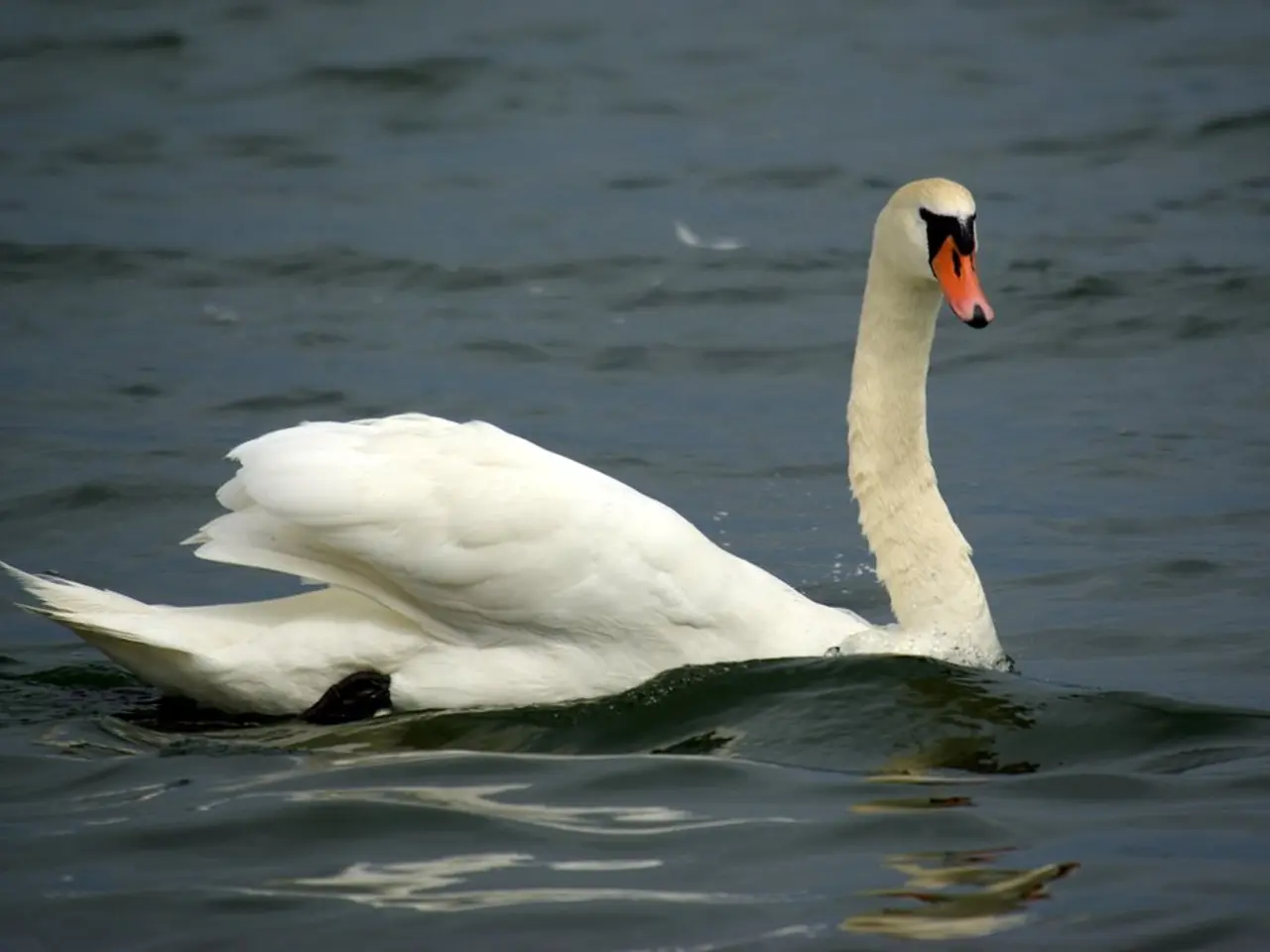Differentiating Long-necked Waterfowl: A Comparison Between Geese and Swans
In the vast expanse of aquatic habitats across the globe, two distinctive bird species stand out - geese and swans. Both belong to the Anatidae family, sharing a common affinity for water and long necks, yet they possess unique characteristics that set them apart.
Swans, the largest members of the Anatidae family, boast elongated bodies, long necks, and wingspans that can extend up to 10 feet (3 meters). They are typically white in plumage, with species like the trumpeter swan and mute swan being common. Swans are more solitary or found in pairs, tending to be more territorial, especially during the breeding season. The female guards nests near aquatic vegetation.
On the other hand, geese are smaller, with shorter necks and more compact bodies. They are more social and communal, often seen in large flocks. Geese also mate for life but cooperate in defending territory, share parental duties, and have honking calls and coordinated flight patterns.
When it comes to migration, both species travel seasonally, but swans generally migrate in smaller groups or pairs, reflecting their solitary or paired nature. Geese, however, migrate in large, V-shaped flocks, an energy-saving formation supported by their social behaviour.
In terms of ecosystem role, swans dominate larger lakes and wetlands, partly due to their size and territorial behaviour, impacting aquatic vegetation and other species by their feeding and nesting habits. Geese, on the other hand, are highly adaptable, often found in diverse habitats including wetlands, grasslands, and even urban areas. Their grazing influences vegetation dynamics, and they can be important seed dispersers.
Swans, with their long necks, can reach underwater plants, while geese feed more often on land, grazing in fields or near urban parks.
Geese are famous for flying in V-shaped formations over long distances, guided by wind patterns and memory. Despite their vocal and protective nature, geese are more likely to retreat in the face of danger. They can be recognized by their black heads and necks with white chinstraps.
Swans, although aggressive, especially around nests, can chase off other birds or even humans. There are six living species of swan, commonly found in temperate regions, preferring colder zones and freshwater habitats. They tend to migrate shorter distances but in smaller flocks.
Geese are more numerous in species and are widespread across North America, Europe, and Asia. The Canada goose and snow goose are two of the most well-known species, often forming large flocks that migrate long distances during the winter.
The Migratory Bird Treaty Act protects both geese and swans, ensuring their continued presence in our aquatic landscapes. Understanding these fascinating differences between geese and swans not only enriches our knowledge of the natural world but also contributes to their conservation efforts.
*The size and solitary nature of swans, as shown in their migration patterns, indicate an emphasis on their own territory and resources, which could be a reflection of political decisions or general-news topics related to conservation and resource management.* The communal behavior of geese, particularly their formation during migration, demonstrates a strong bond between individuals that could mirror aspects of social dynamics or politics within human societies.* Climate change and its impact on the environment might influence the food sources and migration routes of these bird species, raising concerns about the general-news topic of species survival and adaptation in a changing world. Furthermore, the role of both geese and swans in their respective ecosystems could provide valuable insights for determining the effects of climate change on the environment and wildlife.






